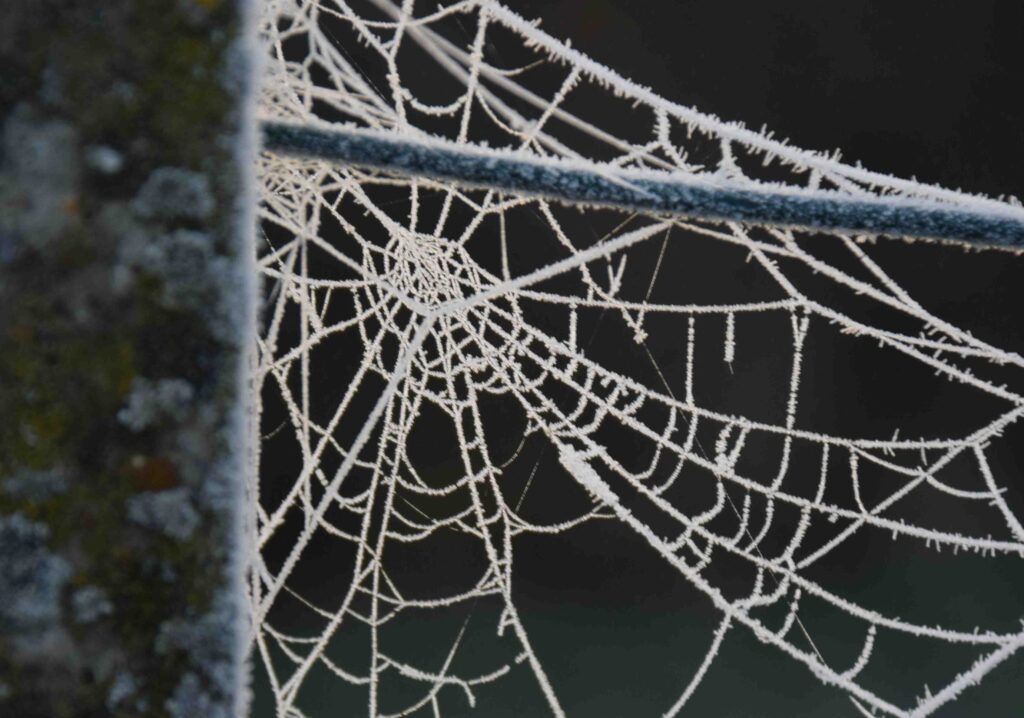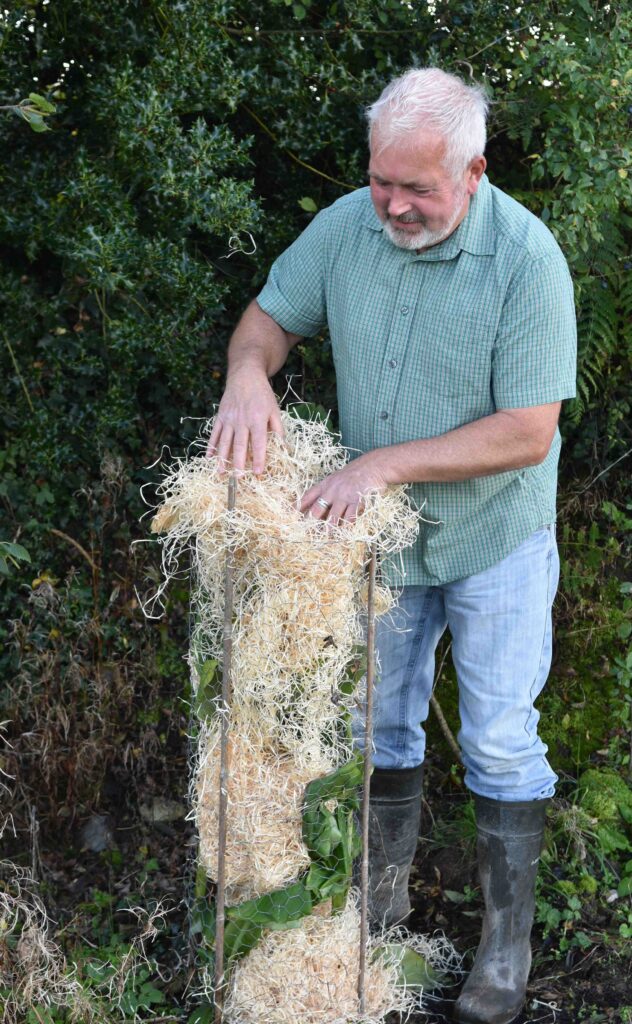
November has been unusually mild, and wet, for weeks, but the weather turned this week. The first frosts of autumn have blackened dahlias, brought down the last of the leaves from the trees and brought more birds to the feeders.
It is always sad to see summer flowers stopped in their tracks but we have been fortunate to enjoy them as long as we have and frost does have its uses. Cold winter weather is necessary to stimulate many hardy plants, including fruit trees, to form flower buds and frost will kill some pests and should slow down others.
But, for most of us, frosty nights bring problems. Frost can damage some of our garden plants and we need to change some of our garden routines.

It has been tricky in recent weeks in my garden, getting around the lawns. The mild weather has meant the grass has been growing, and mowing has been a problem. It has been so wet that even pushing a barrow across it has resulted in muddy tracks. But now frost brings another problem. It is important to keep off lawns while they covered in frost. Wait till the sun has thawed the frost before you walk on it.

When you walk on the frosted grass you break the grass blades and they will die, leaving black footprints and dead patches that will take a while to recover. We should not have much snow yet but it is best to keep off lawns when they are covered in snow too. When you walk on it, or make a snowman, you compress the snow into ice that takes longer to thaw and this will leave yellow patches.

Some of our favourite plants are tender and need protection from severe cold. These might include pots of agapanthus, cannas, pelargoniums and fuchsias. Heating a greenhouse can be expensive and I certainly do not heat the whole space. Instead insulate the roof with bubble plastic and I section-off part that I heat to keep energy costs to a minimum. I have a small, plastic greenhouse inside my greenhouse and heat that area. You can protect lots of plants by keeping them fairly dry (not completely dry), keeping them in the greenhouse and covering them with loose bubble plastic or newspaper on frosty nights, removing it when temperatures rise.

Plants outside in the garden need protection too. When frost kills alstroemerias to the ground you can apply a loose mulch of bark or compost. Agapanthus are generally hardy but the evergreen kinds, that have the largest flowers, benefit from protection in very cold periods. Never use plastic to protect plants because it will encourage rot. You can loosely cover the plants with straw, bracken or a loose cover of fleece but remove them when the weather is not frosty. I protect my hardy bananas with a cage of chicken wire filled with leaves, straw or, in the case below, some wood wool I had as packing material. Cut the leaves off the top of the ‘trunk’ and put some plastic over the top to keep out water – please note it is only as a cap on the cylinder and NOT wrapped around the whole plant.

Dig up and protect dahlias and gladioli from frost. Another thing that needs doing is bringing all watering equipment into the shed so they are not damaged by frost. This includes hoses. You should ‘lag’ outside pipes and any outdoor taps.
Be careful with ceramic and terracotta pots too. These can crack if the compost in them freezes and expands in frosty weather. Move these pots near the house where they will get some protection from frost or wrap them in bubble plastic when severe frost is forecast.
